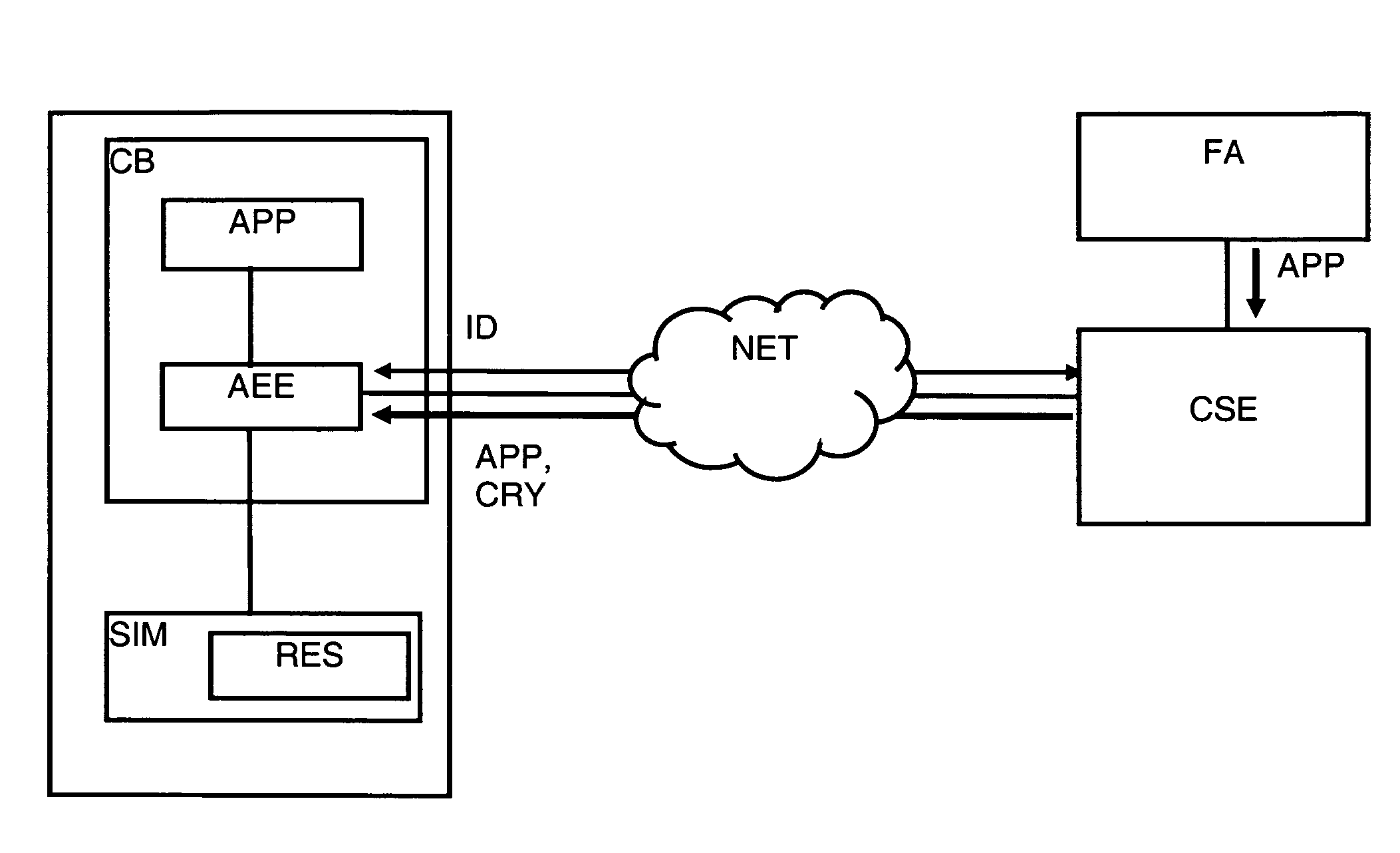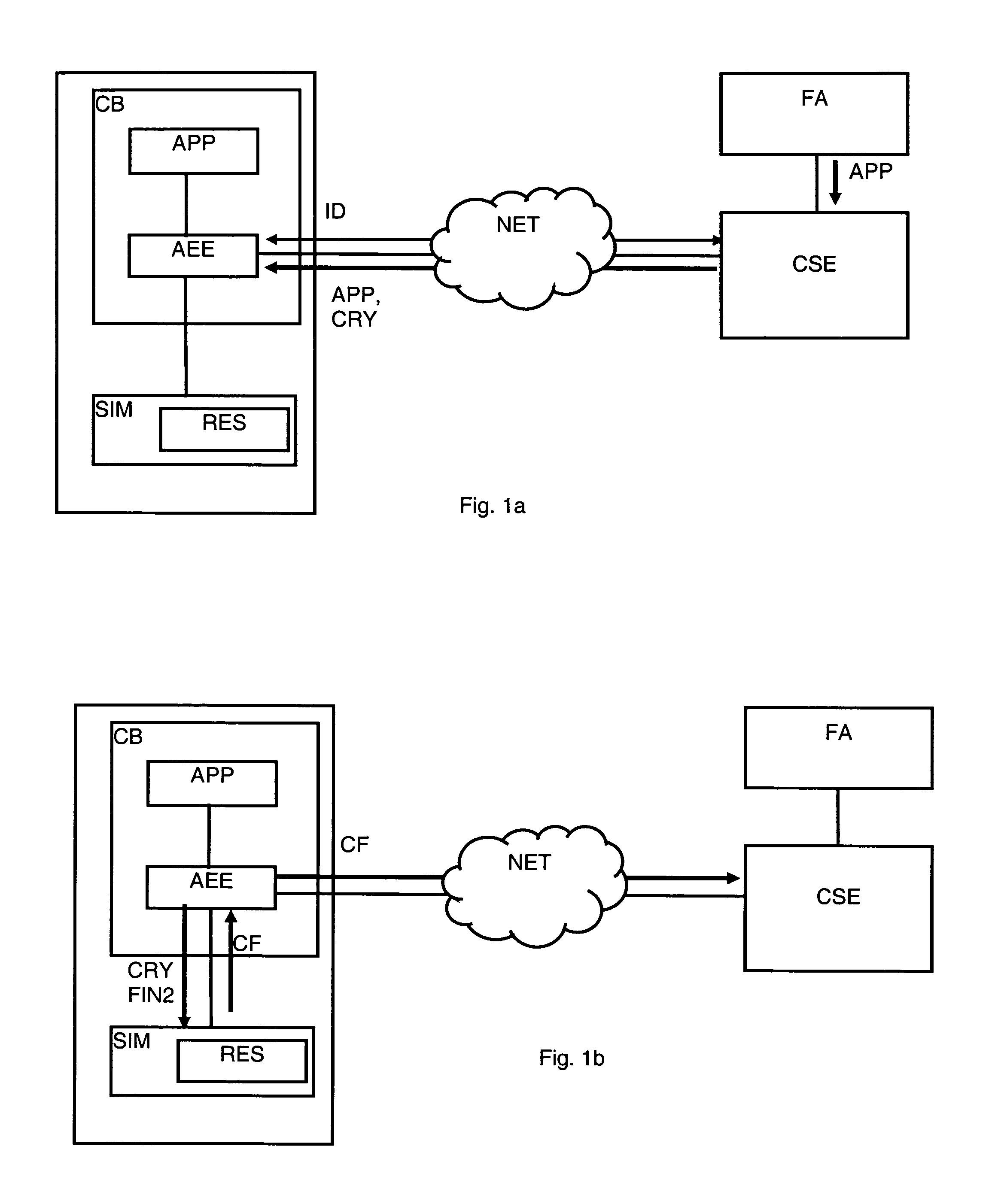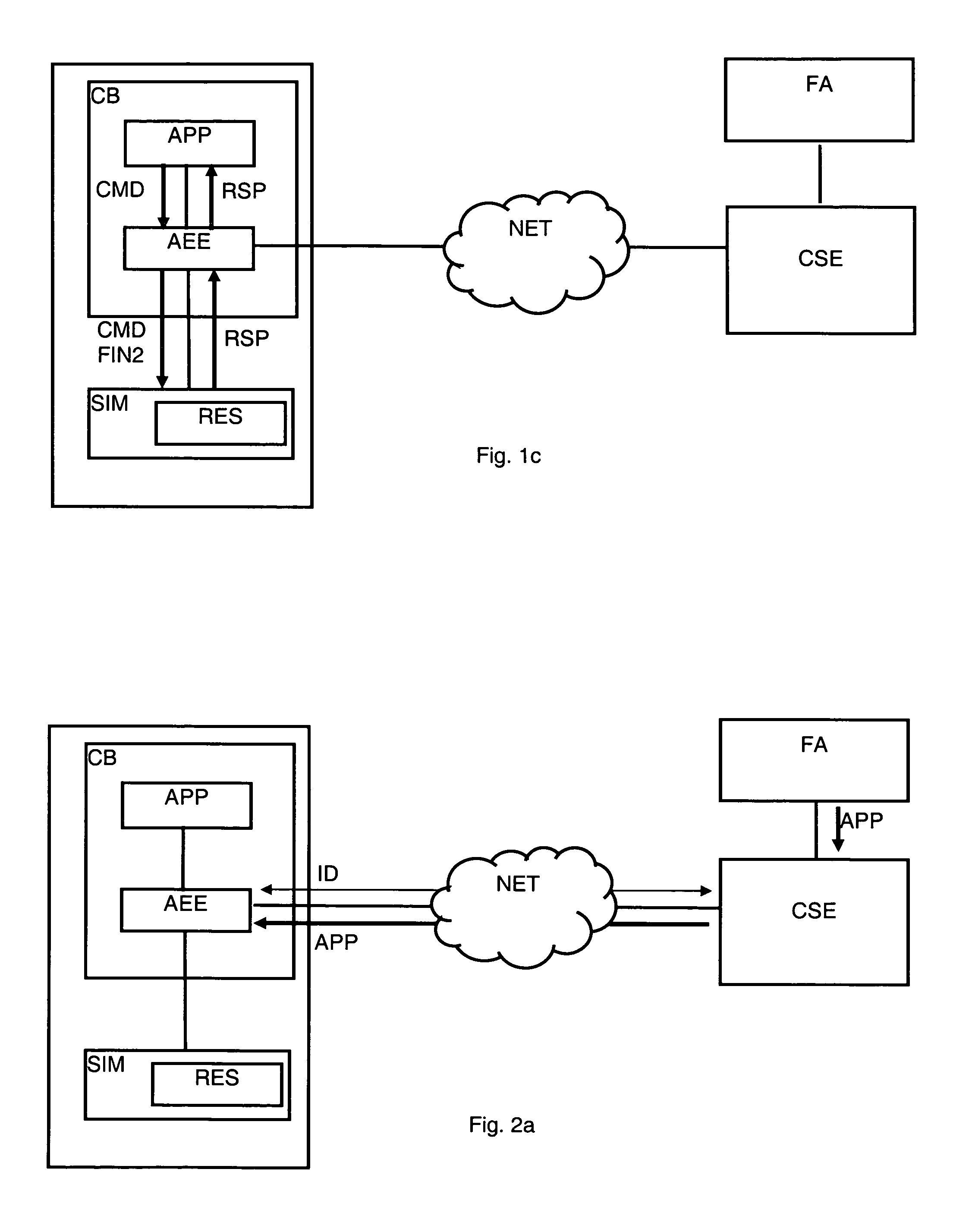Method for the authentication of applications
a technology for authentication and applications, applied in the field of mobile networks, to achieve the effect of limiting the risks of linking
- Summary
- Abstract
- Description
- Claims
- Application Information
AI Technical Summary
Benefits of technology
Problems solved by technology
Method used
Image
Examples
first embodiment
[0051] illustrated by FIGS. 1a, 1b, 1c, the cryptogram (CRY) of an application (APP) is delivered to the subscriber module (SIM) via the application execution environment (AEE) during the installation process of the application (APP).
[0052]FIG. 1a shows the installation process wherein the mobile equipment (CB) first transmits data serving as the identification (ID) of the subscriber module (SIM) that is verified by the control server (CSE). This identification (ID) is carried out from the identifier (IMSI) of the subscriber module (SIM) and the unique identifier (IMEISV) of the mobile equipment (CB). An application (APP) is then downloaded from the server (CSE) accompanied by a cryptogram (CRY) that will be transmitted towards the subscriber module (SIM) via the execution environment (AEE) for verification as shown in FIG. 1b.
[0053]It should be noted that the supplier (FA) is considered as trustworthy by the operator, that is to say that the applications (APP) are approved and fun...
second embodiment
[0071] illustrated by FIGS. 2a, 2b, 2c, the application (APP) is only downloaded, after the identification (ID) of the mobile equipment (CB), without cryptogram (CRY), see FIG. 2a.
[0072]During the verification process, FIG. 2b, the application (APP) requests, at the time of its initialization by the user, a cryptogram (CRY) comprising the resource usage rights (RES) for said application. This cryptogram (CRY) is downloaded, from the control server (CSE), directly by the application (APP) that transmits it to the subscriber module (SIM) via the execution environment (AEE). The subscriber module (SIM) transmits a confirmation (CF) of the reception of the cryptogram (CRY) to the server (CSE), by means of the application (APP) and not by means of the execution environment (AEE) as is the case in the first embodiment. In this way, the execution environment (AEE) plays only the role of a relay between the application (APP) and the subscriber module (SIM).
[0073]The execution process of th...
third embodiment
[0076]This third embodiment may be preferred as its advantage lies in the fact that it does not require any modification of the execution environment (AEE) as it is presently defined for Java applications installed in the mobile telephones, that is to say that a modification of the existing standards is unnecessary.
[0077]Furthermore, the constraint of the first variant that requires two cryptograms using the same digest disappears given that the verification processes of the cryptogram (CRY) and that of the installation of the application are totally independent.
[0078]In order to personalize the digests calculated on the applications, a possibility consists in adding to the application code, before being loaded into the mobile equipment, a different data for each item of mobile equipment. Therefore, when the digest is calculated by the application environment of the mobile equipment, this digest is unique and cannot be used for another mobile equipment. The cryptogram, of course, wi...
PUM
 Login to View More
Login to View More Abstract
Description
Claims
Application Information
 Login to View More
Login to View More - R&D
- Intellectual Property
- Life Sciences
- Materials
- Tech Scout
- Unparalleled Data Quality
- Higher Quality Content
- 60% Fewer Hallucinations
Browse by: Latest US Patents, China's latest patents, Technical Efficacy Thesaurus, Application Domain, Technology Topic, Popular Technical Reports.
© 2025 PatSnap. All rights reserved.Legal|Privacy policy|Modern Slavery Act Transparency Statement|Sitemap|About US| Contact US: help@patsnap.com



